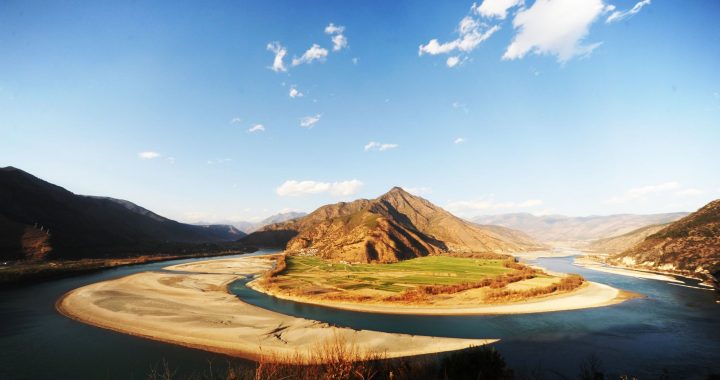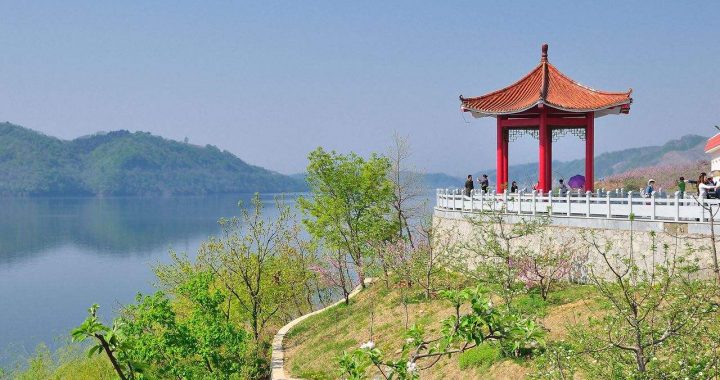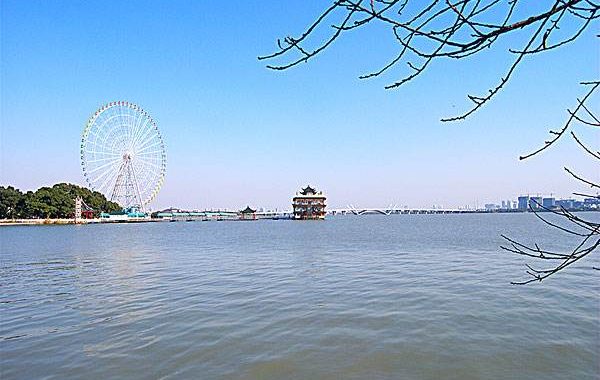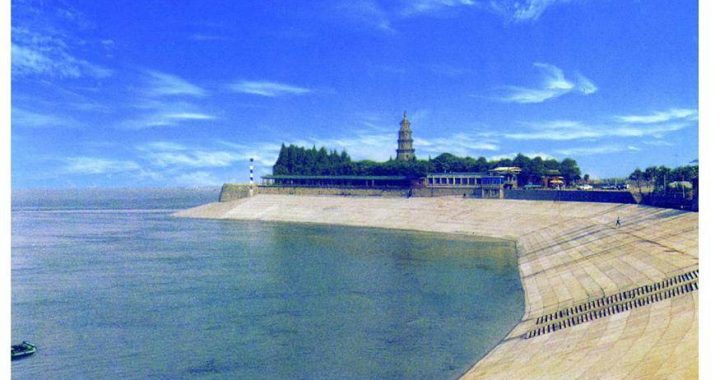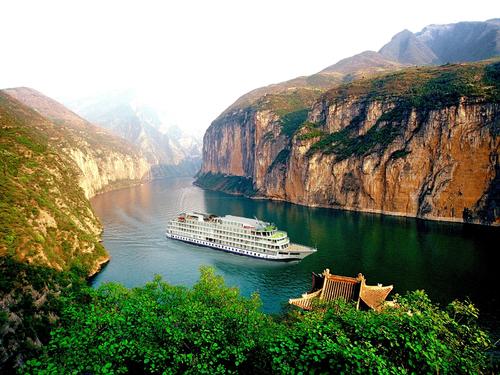Lingqu Canal
4 min readIn the Qin and Han dynasties(221 BC-220 AD),the north was still the political,economic,and cultural center of the country,much more prosperous than the south.However,the south was also in rapid development,in which theYangtze River Basin was the area developed most rapidly.In order to balance the economic strength of the south and the north,and strengthen the national power through mutual promotion of the south and north,the ruler made great efforts to increase the contact of the two,and the excavation of the Yangtze River water-way was one of the means.In the course of dredging up the waterway,excavation of the Lingqu Canal was the most famous one.
Lingqu Canal was the channel excavated for further expanding territory,unifying the Lingnan area and solving the problem of shipping army supplies under the order of Qinshihuang,the first Emperor of Qin,after he unified the six states.It was a man-made canal linking up Xiangjiang River and Lijiang River.Together with Dujiangyan Weir in Sichuan Province and Zhengguoqu Canal in Shaanxi,the three projects were called the Three Grand Irrigation Systems of the Qin dynasty(221 BC-206 BC).
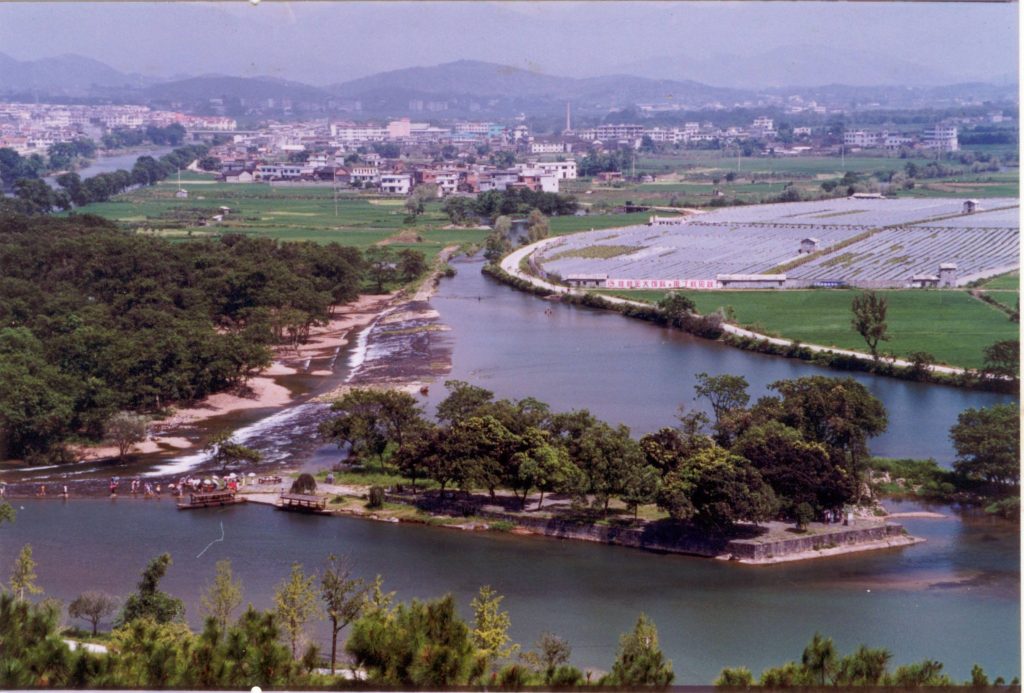
Due to the limitation of the macro mastery of the geo-graphic pattern,to reconnoiter the geographical position of Lingqu Canal was a difficult task.Fortunately,in the exca-vation area there were many watercourses interwoven,which facilitated the excavation to a certain extent.Finally,the artisans overcame all kinds of difficulties and finished the excavation of Lingqu Canal,linking up Xiangjiang River and Lijiang River-Xiangjiang River is the impor-tant tributary of the Yangtze River on the south side,which joins Dongting Lake at last,and Lijiang River belongs to the Zhujiang River water system in south China.Daxi-ao-Tianping Dike was the major project of Lingqu Canal and also the miracle in the history of irrigation systems in China.On the dike there was a small pavilion,in which stood a stele engraved“Xiang-Li Fenpai”(“Bifurcation of A stele engraved“Xiang-Li Fenpai” Xiangjiang River and Lijiang River”). From there came the saying of”30% of the flow goes into Lijiang River and 70% into Xiangjiang River”.
Excavation of Lingqu Canal lasted about four years.
After the canal was finished, people could reach north China by boat from the place of Guangzhou (in Guang-dong Province) today. Till the Ming and Qing dynasties (1368-1911), there were still many ships coming up and down Lingqu Canal incessantly.
After the People’s Republic of China was founded, the government organized to dredge up Lingqu Canal, ex-panding its irrigation area greatly.
Lingqu Canal, one of the earliest irrigation systems in the world, nurtures the residents along the river. It’s been benefiting the society for more than 2,000 years and will continue to do so in the future.
In the course of excavating Lingqu Canal, there also appeared many legends.
Three Generals and Feilaishi Rock (“Flying-over Rock”, or”Windfall Rock”), is one of them. It is said that there were three stonemasons at the foot of the Yuecheng Mountian in the Qin dynasty (221 BC-206 BC)-Zhang, Liu and Li, whose crafts were the best in that area. When First Emperor of Qin sent Shi Lu to host the excavation of Lingqu Canal in Xing’ an, the three stonemasons were all levied into the troop of building Qindi Dike. Overcoming the technical difficulties of cutting, constructing and fixing thousands of rocks were largely their responsibility.
According to the legend, there lived a pig monster under the Santai Mountain, under which Qindi Dyke was being constructed. The pig monster felt that her territory was invaded by the project. She was unwilling to see theLingqu Canal being excavated smoothly, so she kept doing damage to the project, deferring the completion of the pro-ject and inflicting upon the three stonemasons. The evildoing of the pig monster enraged a god. The god used his divine power to move a rock from E’ mei Mountain in Sichuan province and rendered the pig monster unmovable under the rock. Therefore, Qindi Dike was completed andLingqu Canal opened to navigation, which contributed a lot in the Qin troops conquering Lingnan area and Qin’s unification of China.

After the death of the three stonemasons, people set up a monument of”Three Generals”to commemorate the three men’s outstanding contribution to the excavation of Lingqu Canal.
Now people could still see that “Flying-over Rock”on Qindi Dike. Of course, it is not moved by the god as the legend says, but was left in the course of excavatingLingqu Canal in the Qin dynasty (221 BC-206 BC). Mak-ing use of its special geographic position, the stonemasons fixed it to ensure the steadiness and stability of the dike.
The way they did it was very scientific, at which the later generations marveled a lot, therefore there came forth the legend. Also became very famous is the “Flying-over Rock”, where left the handwriting of many famous people and refined scholars.
